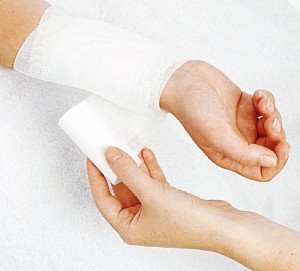Knuckles are bony prominences that can be felt when clenching the fist. Knuckles are strong and do not break easily. A broken knuckle causes pain, swelling and stiffness and affects the daily activities of the individual. The hand is made up of finger bones and bones found in the palm. The bones of the fingers are called phalanges and bones in the palm are called metacarpal bones. The knuckles are found at the end part of the metacarpal bones and it is also known as the metacarpophalangeal joint. A broken knuckle is usually caused by punching on a hard object or a hard surface such as a wall. This injury is quite a common among boxers. It can be treated by immobilization, compression and splinting if there is a breakage.
Symptoms of a broken knuckle
- There is pain and tenderness when the affected area is touched after an injury.
- When clenching the fist, there is a shallow depression instead of a bony depression if a knuckle is broken.
- Within a few minutes, the affected area will swell and there is difficulty in moving the knuckle joint that can spread to nearby knuckles and fingers. The swelling can be caused by buildup of blood and extracellular fluid.
- There is bruising on the outer surface of the skin. The skin found over the knuckles becomes lacerated and blood oozes out of the wound.
- The nerves that are near the knuckles might be damaged, thus causing numbness while the fingers are not capable of bending properly.
Treatment and home remedies for a broken knuckle

- Clean the skin found around the affected knuckle if there is a cut or abrasion using warm water and dish soap. It should be washed after the injury since it helps prevent infection of the broken bone.
- Cover any wounds that are open with a clean bandage in order to stop the bleeding and minimize the risk of developing an infection.
- Apply an ice pack wrapped in a towel or use a towel that is immersed in cold water over the broken knuckle in order to minimize the swelling and pain.
- Elevate the hand above the level of the heart in order to help drain blood from the affected area and minimize any bleeding from the open wounds.
- Strap the affected finger with the next finger in order to keep the finger straight as well as limiting movement of the knuckles. Take note that any movement can worsen the condition of the affected area and increases the risk for infection.
- Use a splint on the knuckles in order to keep the finger straight.
- Take anti-inflammatory and analgesics in order to relieve the pain and swelling.
If a broken knuckle is severe, it is recommended to consult a doctor for proper assessment of the condition and appropriate treatment can be started.
